 The meme token shiba inu has seen a rise against the U.S. dollar during the last seven days as the coin’s supporters anticipate the beta launch of the layer two (L2) scaling solution Shibarium. Developers detailed on Jan. 15, 2023, that the L2 platform, “Shibarium beta,” is about to be launched on top of the […]
The meme token shiba inu has seen a rise against the U.S. dollar during the last seven days as the coin’s supporters anticipate the beta launch of the layer two (L2) scaling solution Shibarium. Developers detailed on Jan. 15, 2023, that the L2 platform, “Shibarium beta,” is about to be launched on top of the […]
Although it has a much smaller market cap, on-chain data shows that USDC has a much greater transfer volume compared to its main competitor USDT.
Stablecoin USD Coin (USDC) has grown in popularity since the collapse of FTX and now frequently reaches daily transfer volumes four to five times that recorded by major competitor Tether (USDT) according to data from blockchain analytics firm Glassnode.
That’s despite the market cap of USDT being $23 billion greater than USDC. As of Jan. 10, the difference was in USDC’s favor by a margin of four and a half times.
Both stablecoins recorded surges in transfer volumes following an infamous tweet from Binance CEO Changpeng Zhao on Nov. 6 announcing Binance would liquidate its entire FTX Token (FTT) holdings. FTX went into bankruptcy soon after.
Since then, USDC has been the preferred choice for crypto users averaging over $12.5 billion more in transfer volume compared to USDT per day according to Glassnode data.

While each of the stablecoins is designed to trade as close to one U.S. dollar as possible and is backed by reserves held by its issuers, USDC is regarded by some in the crypto community as a potentially safer option.
Supporters point to USDC’s assets, which are backed by cash or short-term U.S. treasuries and its monthly audits by global accounting firm Grant Thornton.
Tether has faced criticism over a number of years for not providing a proper audit and for being less transparent about its reserves.

The company behind USDT was fined $41 million in Oct. 2021 by the Commodity Futures Trading Commission, which accused it of only holding sufficient reserves 27.6% of the time between 2016 and 2018 despite claiming its tokens were fully backed by fiat currencies.
Tether has been reducing the commercial paper backing its issued tokens in favor of safer alternatives, with the latest asset breakdown on Nov. 10 showing that nearly $46 billion of its reserves consist of cash, bank deposits and U.S. treasuries.
Related: Crypto.com delists USDT for Canadian users following OSC ban
USDT briefly lost its peg to the U.S. dollar following the FTX collapse amid fears it was exposed to Alameda Research and FTX, which Tether denied.
On-chain evidence suggests the two firms were attempting to short the stablecoin.
USDT had been recording transfer volumes much higher than USDCs up until May 2021, after Tether had increased the supply of the token from $8.79 billion to $61.82 billion over the last year, representing an increase of 603%.

Despite the subsequent change in consumer preferences, Tether had referred to the growth in market capitalization as an indication of “the market’s continued trust and confidence in Tether,” and noted every token can be redeemed for U.S. dollars on a 1:1 basis.
 Gold is on the rise in 2023 and in the first week of the new year alone, the precious metal has jumped 2.36% against the U.S. dollar. Over the past 65 days, gold has soared 14.55% while silver has skyrocketed 22.31% against the greenback since Nov. 3, 2022. According to the head of metals strategy […]
Gold is on the rise in 2023 and in the first week of the new year alone, the precious metal has jumped 2.36% against the U.S. dollar. Over the past 65 days, gold has soared 14.55% while silver has skyrocketed 22.31% against the greenback since Nov. 3, 2022. According to the head of metals strategy […] After the all-time cryptocurrency price highs in 2021, suffering through the Luna implosion of 2022 and watching countless crypto businesses go belly up, we’ve got a new entrant to the meme coin scene that launched on the Solana network. The crypto asset bonk inu (BONK) has a circulating token supply of around 41.5 trillion and […]
After the all-time cryptocurrency price highs in 2021, suffering through the Luna implosion of 2022 and watching countless crypto businesses go belly up, we’ve got a new entrant to the meme coin scene that launched on the Solana network. The crypto asset bonk inu (BONK) has a circulating token supply of around 41.5 trillion and […]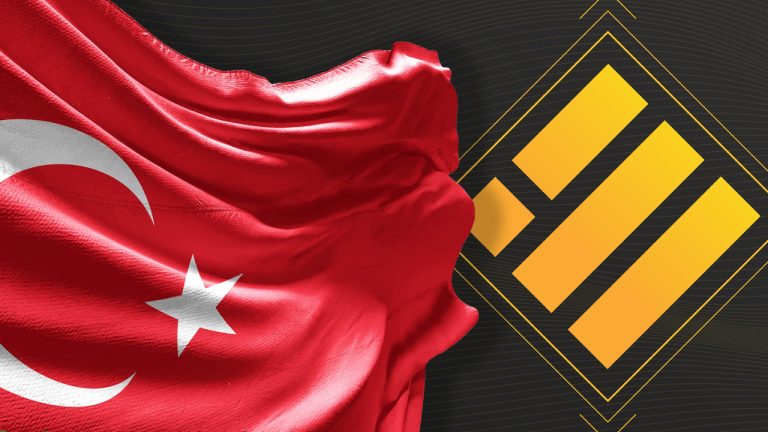 According to statistics, the stablecoin BUSD saw a significant drop in its supply over the past 30 days, shedding roughly 23.8% from Dec. 5, 2022, to Jan. 6, 2023. Since Dec. 13, 2022, BUSD’s supply has been reduced by more than $5 billion, going from $21.84 billion to its current level of $16.77 billion. Stablecoin […]
According to statistics, the stablecoin BUSD saw a significant drop in its supply over the past 30 days, shedding roughly 23.8% from Dec. 5, 2022, to Jan. 6, 2023. Since Dec. 13, 2022, BUSD’s supply has been reduced by more than $5 billion, going from $21.84 billion to its current level of $16.77 billion. Stablecoin […]
BMW will integrate decentralized tech in two phases- first in its daily operations to eliminate complex paperwork, and the second phase would see the development of a customer loyalty program.
German car manufacturer BMW plans to integrate blockchain technology into its daily operations and create a blockchain loyalty program for its customers in Thailand. The popular carmaker has onboarded blockchain infrastructure firm Coinweb as its decentralized architecture provider and BNB Chain for settling transactions.
The integration of blockchain technology into BMW’s workflow will take place in two phases. First, the decentralized tech will be integrated into BMW’s daily operations with the goal of automating time-consuming manual processes and streamlining the company’s automobile financing services.
The second phase of the project would see Coinweb develop a customized Web3 application for BMW’s customer loyalty program. The program will use a blockchain-based rewards scheme to incentivize BMW Group customers. A customer’s tier and status in the ecosystem will be determined by the loyalty rewards they have acquired via various actions.
Related: F1 Monaco GP: Bybit’s Red Bull Racing NFTs, crypto-F1 partnerships and more
Owners will be able to use their rewards to purchase goods and services from BMW as well as from a linked ecosystem in the future. Binance’s native BNB chain will be used to settle transactions.
Talking about how customers will be rewarded under the upcoming loyalty program, Coinweb CEO Toby Gilbert, told Cointelegraph that customers will be rewarded every time they have touchpoints with the BMW ecosystem, be it “buying a new car or they go for a service,” he explained further:
“Customers will be rewarded with loyalty points and they will be able to spend within the ecosystem. Our hope is that there will be a future global rollout but currently our partnership is for Thailand.”
BMW Thailand’s leasing head Bjorn Antonsson said that the firm has been actively monitoring the progress of decentralized tech and its various use cases over the years. Antonsson hoped that the integration of blockchain tech in their daily operations would eliminate the manual paperwork and contribute toward the company’s efficiency and transparency.
The interest of automobile manufacturers in decentralized tech is nothing new, and BMW has been involved with the tech since 2018. BMW first used blockchain technology to track its cobalt supply and ensure its products are being supplied using ethical practices. Apart from BMW, another popular German carmaker Mercedes has actively used nonfungible tokens and crypto coins as promotional tools.
Italian carmaker Alfa Romeo used blockchain tech to track car records, while Ferrari’s new deal has hinted at NFT integration as well.
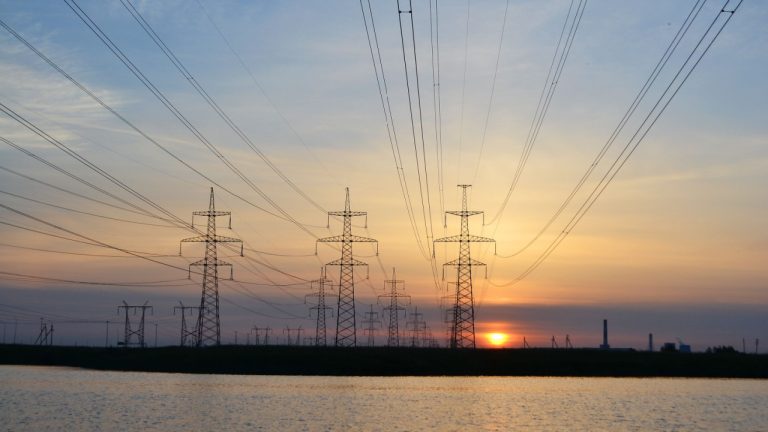 Russia is preparing to provide Kazakhstan with additional energy needed to operate crypto mining farms in the Central Asian nation. New arrangements will allow Kazakhstan’s miners to buy electricity directly from the Russian power generation and distribution giant Inter RAO. Miners in Kazakhstan to Source Energy From the Russian Federation Crypto mining enterprises operating in […]
Russia is preparing to provide Kazakhstan with additional energy needed to operate crypto mining farms in the Central Asian nation. New arrangements will allow Kazakhstan’s miners to buy electricity directly from the Russian power generation and distribution giant Inter RAO. Miners in Kazakhstan to Source Energy From the Russian Federation Crypto mining enterprises operating in […]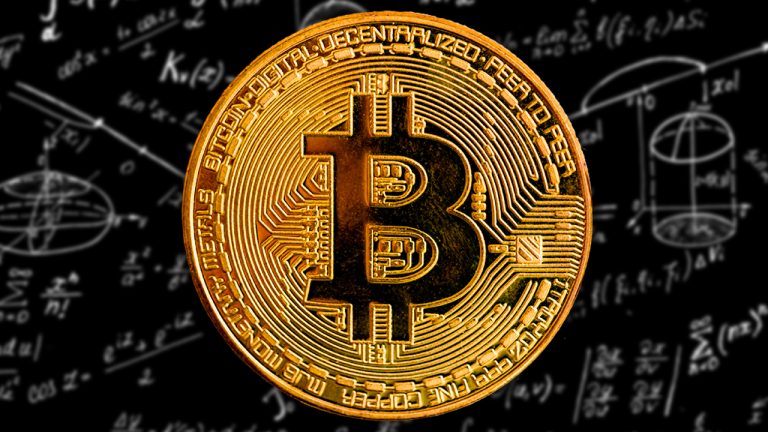 This past April, records show that 19 million bitcoins have been mined into existence and 133 days later, there are 1.88 million bitcoins left to mint today. The network’s block subsidy halving is expected to occur on or around April 20, 2024, as there are less than 91,000 bitcoins left to mine until that point. […]
This past April, records show that 19 million bitcoins have been mined into existence and 133 days later, there are 1.88 million bitcoins left to mint today. The network’s block subsidy halving is expected to occur on or around April 20, 2024, as there are less than 91,000 bitcoins left to mine until that point. […]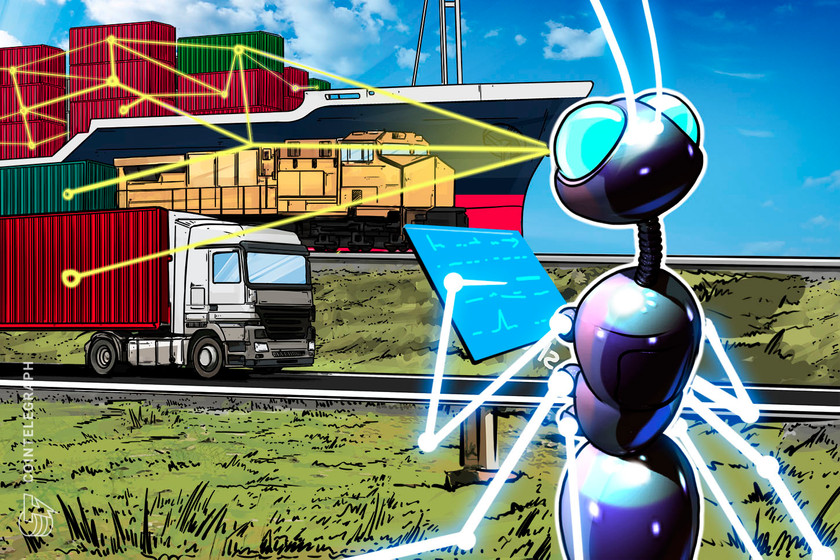
Blockchain technology has proven to be transparent and could make international trade transparent and even more secure.
Since time immemorial, technological innovations have shaped the structure of commerce and trade. The discovery of electricity encouraged mass production and the advent of steam engines ushered in an era of mechanized production.
From information to communication, technology has been used everywhere to make life easier. For this reason, blockchain technology has been tapped by many as the next big thing, considering its use cases which cut across numerous industry verticles.
Mainly used in keeping records of transactions, blockchain technology is a type of distributed ledger technology.
According to Statista, blockchain makes keeping data records easier, more transparent, and even more secure. Owing mostly to its resistance to alteration, blockchain offers time-based information on transactions, whether they are between private individuals, corporate entities, supplier networks or even an international supply chain.
It is also a common notion that blockchain is only a technology for Bitcoin (BTC). However, that assumption could not be more wrong. While the technology emerged alongside Bitcoin in 2008, however, today, its use cases have evolved far beyond cryptocurrencies. From finance to e-commerce, food safety, voting exercises and supply-chain management, its applications cut across virtually all sectors of the global economy, including areas directly or indirectly linked to international trade.
The value chain attached to international trade is a notably complex one. While its transactions involve multiple actors, its other aspects like trade financing, customs administration, transportation and logistics all benefit from the adoption of blockchain technology.
According to Statista, cross-border payments and settlements account for the largest use cases of blockchain technology, especially considering how there have been numerous past efforts to digitize trade transactions.
As of today, the potential of blockchain to enhance the efficiency of trade processes is already being explored. For instance, the blockchain project Open Food Chain is working to improve food security via its Komodo Smart Chain.
Recent: Crypto contagion deters investors in near term, but fundamentals stay strong
Kadan Stadelmann, chief technology officer of Komodo — technology provider and open source workshop — told Cointelegraph:
“Blockchain’s biggest advantage is immutability, meaning data can’t be deleted or edited after it’s on the ledger. For international trade, this provides an opportunity for more transparency across several major industries.”
Stadelmann explained that the technology ensures that foods can be tracked from their origin (i.e., a farm in another country) to the consumer’s local supermarket. He says this can help improve food security around the globe by tackling issues like food contamination outbreaks as 600 million — almost 1 in 10 people in the world — fall ill after eating contaminated food and 420,000 die every year, according to the WHO.
Blockchain can streamline the complex documentation processes that are prevalent in international trade. Zen Young, the CEO of noncustodial web authentication infrastructure Web3Auth, told Cointelegraph:
“Digitizing documents for traditional clearance processes, and transactions in international trade can take up to 120 days to complete, but with bills of lading tracked through blockchain, the need for such processes and potential for double spending is eliminated.”
“Transfer payments and transactions are also quicker and cheaper than currently possible through the SWIFT network, blockchain commissions are lower and without maximum limits, which is especially advantageous for exporting goods,” he said.

Furthermore, Zen added that these factors will help fraud reduction through digitally verifiable and legally enforceable non-paper documentation.
In another use case, IBM and Maersk are working on a blockchain-based solution to streamline the global shipping industry. The project, which is called TradeLens, is designed to digitize the entire shipping process on a blockchain.
The ultimate goal is to create a more efficient and transparent supply chain that can speed up delivery times while reducing costs. So far, the project has been successful in onboarding over 150 organizations, including major port operators, shipping companies and logistics providers.
According to IBM, TradeLens has processed over 150 million shipping events and has saved users an estimated 20% in documentation costs. In addition, the platform has reduced the time it takes to ship goods by 40%.
As blockchain continues to gain traction in various industries, it is only a matter of time before its potential is fully realized in the world of international trade. With its ability to streamline processes and reduce costs, blockchain has the potential to revolutionize the way goods are traded around the world.
Despite its promises, however, there are some weak points in blockchain tech’s application to international trade.
The major disadvantage of using blockchain is the fact that it is often associated with high transaction costs. For example, when it comes to cross-border payments, blockchain technology has been known to be quite expensive.
This is because blockchain transactions often involve multiple intermediaries, which can drive up costs. In addition, the time it takes to settle a blockchain transaction can be quite lengthy, which can also add to the overall cost.
Another disadvantage of blockchain is its lack of scalability. Due to the fact that each block in a blockchain must be verified by all nodes on the network, the system can often become bogged down when handling large volumes of transactions.
This can lead to delays in the processing of transactions, which can be a major issue in the world of international trade.
Finally, according to Deloitte, blockchain technology is still in its early stages of development, which means that it is subject to a number of risks and uncertainties. For example, there could always be the risk that a critical flaw could be discovered in the scalability and privacy framework that could pose an issue to the financial end of the operation.
In addition, there is also the risk that bad actors could exploit vulnerabilities in the system in order to commit fraud or theft. These risks need to be carefully considered by those who are looking to use blockchain technology in the world of international trade.
Recent: Ethereum Merge: How will the PoS transition impact the ETH ecosystem?
Despite these disadvantages, it is important to note that blockchain technology is still in its early stages of development. As the technology matures, it is likely that many of these issues will be addressed and resolved.
As more and more organizations begin to adopt blockchain technology, the overall cost of using the system is likely to decrease. This could make blockchain a more viable option for those who are looking to streamline their international trade operations.
In the end, blockchain technology has the potential to revolutionize the way goods are traded around the world. With its ability to streamline processes and reduce costs, blockchain has the potential to make international trade more efficient and transparent.
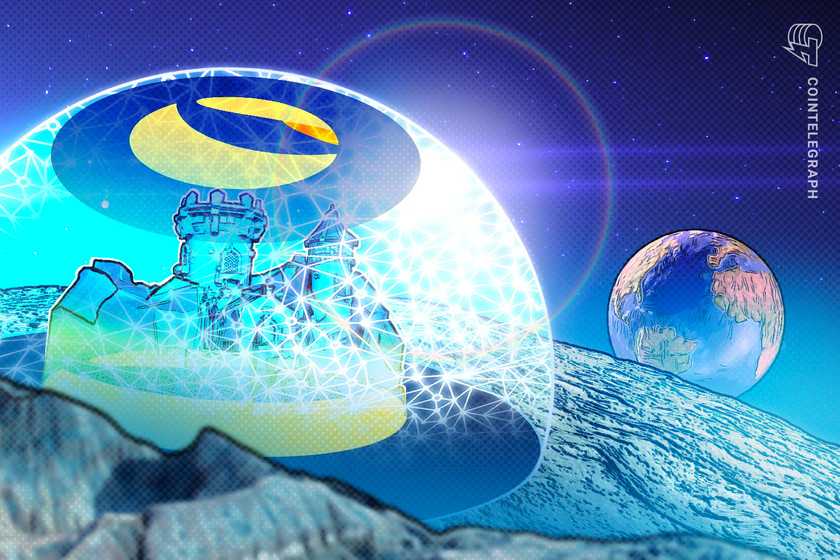
Upon a persistent request from the Terra community, Kwon went against his initial plan and publicly shared a burn address for LUNA on May 21.
The recent Terra revival plan announced by Do Kwon, the co-founder and CEO of Terraform Labs, received mixed reactions as many questioned the effectiveness of a hard fork in reviving the fallen prices of LUNA and UST tokens. Instead, the part of the community recommended burning LUNA tokens as the most plausible way to achieve a comeback.
Kwon’s proposal to preserve the Terra ecosystem involves hard forking the existing Terra blockchain without the algorithmic stablecoin and redistributing a new version of the LUNA tokens to investors based on a historical snapshot before the death spiral. However, several crypto entrepreneurs, including Changpeng “CZ” Zhao, opined that:
“Reducing supply should be done via burn, not fork at an old date, and abandon everyone who tried to rescue the coin.”
Upon a persistent request from the crypto community, Kwon went against his initial plan and publicly shared a burn address for LUNA on May 21. Every LUNA token sent to this address will be burned immediately, effectively reducing the circulating supply of LUNA tokens.
To clarify, as I’ve noted multiple times i dont think sending tokens to this address to burn tokens is a good idea - nothing happens except that you lose your tokens
— Do Kwon (@stablekwon) May 23, 2022
Want there to be no confusion whatsoever https://t.co/GrzG9cclAr
Two days after sharing the LUNA burn address, Kwon reiterated his point of view that reducing the circulating supply of LUNA tokens will have no impact on the market price, stating, “nothing happens except that you lose your tokens.”
The Terra co-founder clarified that the burn address was shared with users only for information purposes and warned against using it:
“Happy to provide for information purposes but want to clarify that you should not burn tokens unless you know what you are doing - I for one cannot understand.”
However, the revelation resulted in more confusion among investors. As Cointelegraph previously reported, LUNA’s insane volatility serves as a lucrative opportunity for investors as many try to recoup their losses and others eye profitable trades.
Kwon has previously confirmed that Terra is no longer minting new LUNA tokens, which is one of the main reasons why investors believe a burning mechanism will improve LUNA price owing to scarcity.
Amid an unclear roadmap for a resolution, investors are advised to refrain from making abrupt financial decisions as the master plan for Terra revival continues to be under public scrutiny.
Related: Near Protocol picks up slack, onboards Tracer following Terra's downfall
As a direct consequence of Terra’s collapse, numerous projects sought to migrate to different blockchain ecosystems fighting for survival. Near Foundation, too, played its part by recently onboarding Tracer, a Web3 fitness and lifestyle app.
Speaking to Cointelegraph, Near Foundation’s (NEAR) Nicky Chalabi highlighted that projects like Tracer seek alignment with the ecosystem’s core values and that:
“Projects must watch the interests of their community and users because, in the end, that’s the most valuable thing you have.”
Chalabi further advised Terra projects to migrate only after considering the interests of their users and communities, stating "That can actually define your success."